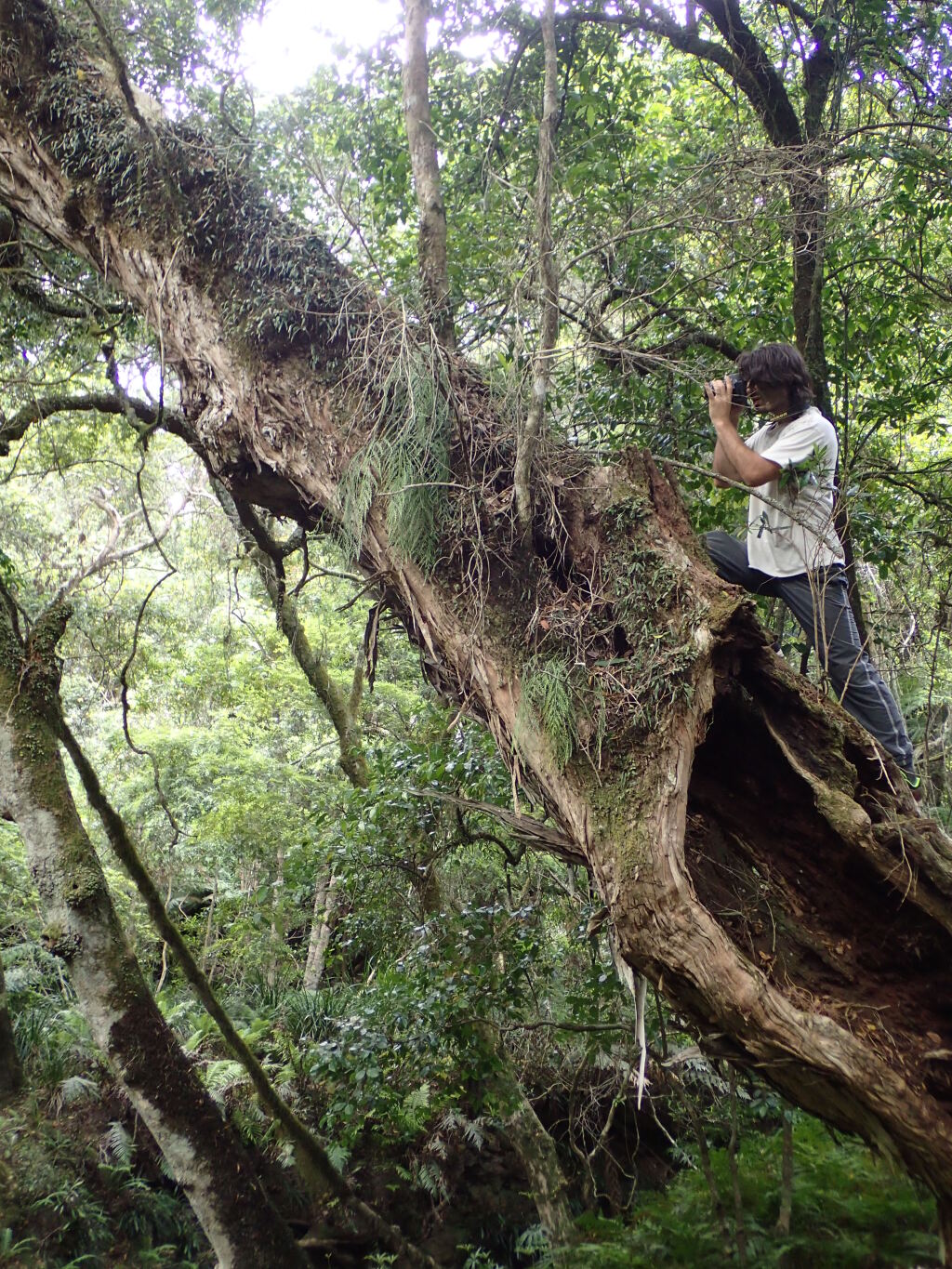Asplenium flaccidum subsp. flaccidum
Weeping SpleenwortEpiphytic fern. Rhizome short, thick, covered with linear, tapering, dark brown scales. Fronds tufted, usually pendent, 20–90 cm long. Stipe shorter than lamina, flattened, grooved, green; scales similar to those of rhizome, crowded at base and scattered above. Lamina variable in shape, size and texture, but usually narrow, 1–2-pinnate; rachis grooved, green, with scattered scales. Pinnae distant, up to 20 cm long, linear with long, drawn-out tips, thickened basal edge of primary pinnae decurrent on raised edge of rachis; pinnules usually becoming well-separated along rachis, linear-oblong, to 15 mm long, hardly decreasing in size until near tips of primary pinnae, margins entire, or basal pinnules sometimes bilobed in larger fronds; veins obscure. Sori oblong, submarginal, borne singly on pinnules; indusium oblong, pale, firm.
GipP, OtP, CVU, EGL, EGU, WPro, HSF, HNF, OtR, Strz, HFE. Also Qld, NSW, Tas. New Zealand, Pacific islands. Grows in wet, cool forests of Victoria, where it is epiphytic on tree-ferns or tree trunks.
Subspecies haurakiense is restricted to coastal rocks and cliffs on islands in the Bay of Plenty, New Zealand. It has upright fronds, stipe scales with thicker walls than subspecies flaccidum, and an enlarged, pinnate, secondary pinna on each primary pinna (Brownsey 1977, Brownsey & Smith-Dodsworth 1989). See also notes under A. appendiculatum. Hybridizes with A. obtusatum. (see notes under that species) and possibly A. bulbiferum.
Entwisle, T.J. (1994). Ferns and allied plants (Psilophyta, Lycopodiophyta, Polypodiophyta). In: Walsh, N.G.; Entwisle, T.J., Flora of Victoria Vol. 2, Ferns and Allied Plants, Conifers and Monocotyledons, pp. 13–111. Inkata Press, Melbourne.
 Spinning
Spinning


